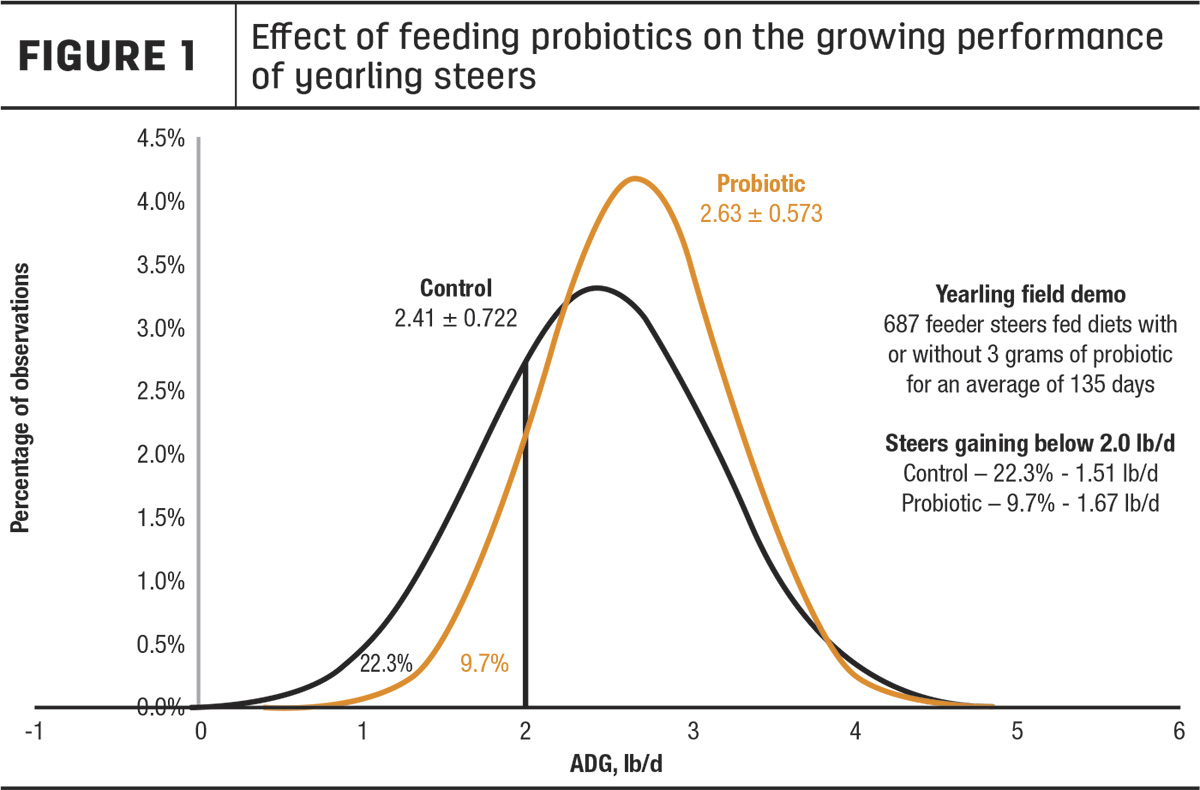I know we have all been there: The trucks are loaded and headed to the local sale barn with this year’s calf crop. We waited all year to sit and watch these fancy calves fill the ring and circle around. All our blood, sweat and prayers that went into getting to this beautiful fall day will soon be worth it. Ring full after ring full, we sit and begin picturing the large paycheck we’ll be handing the bank later that afternoon.
It’s about this time the whole mood of the sale changes. The ring of the auctioneer’s voice slows from calling bids to describing the single critter standing alone in front of everyone. “Smaller sister on the bunch,” he boasts as the ring man spins her about, “Not a thing wrong with her.” One by one, he sells the last dozen of your home-raised calves and, as expected, at a deeply discounted price compared to the large groups of their more uniform herdmates. The lost profit potential of these underperforming calves emphasizes the power of uniformity.
Throughout the year, cattle producers make decisions centered around producing and/or marketing a consistent product. Across the beef industry, this product varies from home-raised steers and replacement heifers from cow-calf guys, to grass yearlings from stocker guys, to fat cattle from feedlots. Regardless of the sector, all would agree that the best price is discovered, and profitability is highest, when cattle are sold as like groups that are cookie cutters on frame, flesh and overall quality. Producing these types of uniform cattle consists of management decisions that span everything from breeding to health to feed management.
For the cow-calf producer, the outcome of sale day starts long before the calves enter the ring. Decision-making centered around calf crop consistency will start with buying bulls and females of similar genetics and expected progeny differences (EPDs). Maintaining cows at a favorable body condition score throughout the year will impact calf performance both directly through calf gains and indirectly through cow breedback timing after turnout. The length of time the bulls are turned out with a group of cows ultimately determines the final days of age of each calf at sale time. Older calves generally weigh more at weaning time, and that all starts with cows that are cycling early in the breeding season. Using the recommended bull power for your operation and area of the country will hedge your bets for settling those cows and making sure your upcoming calving season is busy yet short. Calving out 70% or more of your cows in the first 21 days of the calving season ensures a more consistent group at weaning, regardless of whether your plan is to retain ownership or market the steers and heifers.
Management decisions for both stocker and feedlot operators begin before the gavel drops and the check is signed. Filling a trailer with calves or yearlings of similar frame and flesh is ground zero on determining your overall outcome at sale time. It’s far easier to start and finish with an even set of feeders versus trying to grow an inconsistent set together. For operations that buy mismanaged cattle through the barn, sorting them upon arrival or grass turnout into similar-sized penmates will safeguard the chances of consistent gains from animal to animal. Proper stocking rates both on grass and in the yard will also assist in this, as will adequate bunk space per animal when feed is delivered either as a supplement or a total mixed ration (TMR). Bunk space recommendations vary from 9 to 18 inches per head and are based on the type of cattle fed. Cattle that will be limit fed a hand-fed supplement or ration require more space, ensuring that all animals can stand at the bunk at one time. Consumption of a consistent feed source on a daily basis also determines the resulting gains of those cattle, as inconsistent ration management and mixing will cost valuable pounds in the end.
Consistency across all feed and health management operations is key in producing a uniform product, though it might seem like something is missing at times. Even with proper management, there are still those calves that just don’t perform as expected. There could be a multitude of reasons for those poor doers. One that could be worth further evaluating is gut health.
A mammal’s gut health is a revolving science that continues to enter the space of health and nutrition, as it goes much farther than what that animal consumes. The ultimate outcome of that animal is directly correlated to the health of its insides. With that, probiotics play a crucial role in assisting that animal to perform to its genetic potential.

An example of this was uncovered in a recent field demonstration comparing the feeding of yearling steers either with or without a probiotic or direct-fed microbial added to their feed (Figure 1). The probiotic consisted of a product that contains a very effective spore-forming bacteria (Bacillus subtilis and Bacillus licheniformis), which provides additional enzymatic production, increasing the digestibility of feedstuffs, as well as effective paths to support the health of the gut. After 135 days on feed, the steers consuming the daily probiotic outperformed the control group on average by 0.2 pound daily.
Comparing the standard deviation was even more impressive. Standard deviation (SD) is a measure of the amount of variation between the individual values around the average – in this case, average daily gain (ADG). The gains of steers that were fed the probiotic exhibited a lower SD than steers that weren’t, resulting in a more uniform group of feeder steers to be marketed as a single unit. When evaluating individual gains, the number of steers that performed less than 2 pounds of gain was cut by over 50%, from 22% in the control group to less than 10% in the probiotic-fed group.
This performance boost helps cattle producers minimize the number of poor doers in a lot and maximizes profit potential at sale time.










